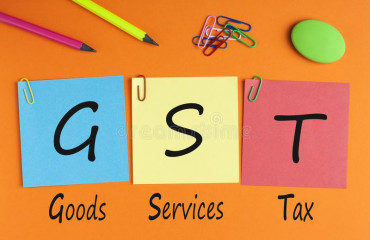
While UP and Tamil Nadu file more returns than Maharashtra on a monthly basis, in the last month of every quarter, when smaller businesses with annual sales of up to ₹1.5 crore also file returns, Maharashtra has an edge
Uttar Pradesh, Tamil Nadu and Maharashtra lead in filing Goods and Services Tax (GST) returns on a monthly basis, showing their economic potential, data from GSTN, the company processing tax returns, showed.
While Uttar Pradesh and Tamil Nadu file more returns than Maharashtra on a monthly basis, Maharashtra edges ahead on the last month of every quarter, when smaller businesses with annual sales upto ₹1.5 crore also file their returns under a special scheme.
UP, the most populous state in the country reported more than 908,900 GST returns showing their monthly transaction summery in April (in form GSTR- 3B), while industrialized Tamil Nadu reported over 880,200 GST returns.
Maharashtra was in third position with over 798,600 GST returns in the month. Karnataka, Gujarat and Delhi followed these states in the number of returns filed in April.
Monthly return filings of transactions indicate not only the business activity in the state, but also the compliance levels, the revenue generating potential of the state, efficiency in tax administration and the demand for goods and services there. More than 93% of the registered businesses have filed GST returns in these states.
Also Read: GST Council meeting: Tax rates changed for goods & services; Here's what gets cheaper & costlier
However, in the just concluded March quarter of FY24, Maharashtra reported 1.46 million GST returns, ahead of 1.43 million returns filed by Uttar Pradesh and 1.05 million returns by Tamil Nadu.
Maharashtra is the largest state economy in the country with a gross state domestic product (GSDP) of ₹20.2 trillion in FY22, followed by Gujarat with ₹13.6 trillion and Tamil Nadu with ₹13.4 trillion. Karnataka has a GSDP of ₹12.35 trillion while UP has a ₹12 trillion economy. Some of the union territories and North Eastern states lag behind in GST return filings, indicating their economic weakness.
Besides Maharashtra and Uttar Pradesh, IT hub Karnataka, mineral-rich Odisha and Tamil Nadu are the states where GST cess levied on automobiles are collected the most, data showed, indicating these are big markets for the automobile sector.
The largest importers of goods and services from other states are Maharashtra, Haryana, Delhi, Karnataka and Gujarat, benefitting from Integrated GST (IGST) that is levied on inter-state sales, showed data for May. In terms of overall GST revenue collection, Maharashtra led the list, followed by Tamil Nadu, Gujarat, Karnataka and Uttar Pradesh.
At the end of March 2024, over 12.6 million businesses were eligible for filing GST returns, compared to 12 million in the same month a year ago, showing a near 5% addition to the number of businesses required to file GST returns.
The new indirect tax system introduced in 2017 will complete seven years on 1 July.
"Leveraging GST data for unlocking business insights and introduction of the long awaited compliance rating system are high on the minds of tax payers," consulting firm Deloitte said, citing a survey of over 700 industry executives from six different industries.
